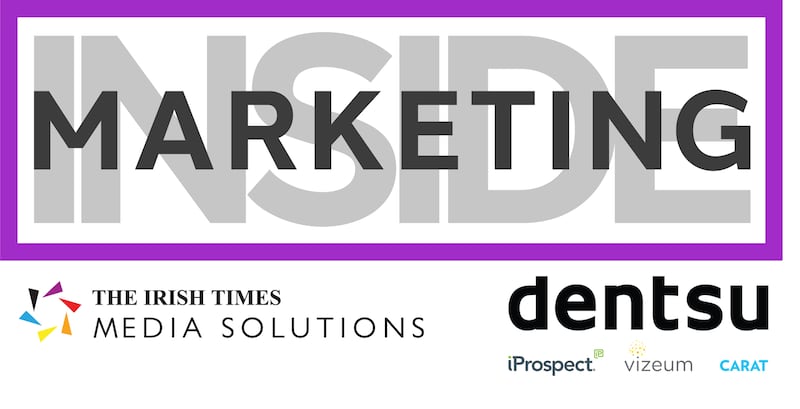Think about the last time that you searched for “restaurants near me”, or “cheap vacuum cleaner”. It has probably been a couple of years, right? We become so accustomed to continual advances in technology that these incremental, subtle changes happen somewhat under the radar.
Searches including the word “cheap” have been in steady decline over the last 15 years, replaced by “best”.
Google knows, and we’ve come to expect, that “best” should include price – among other features – when searching for a product or service. Likewise, while once upon a time “near me” was one of the first search terms used by a consumer as they took a stroll through a new city, its use today has become somewhat redundant, given location-based assumptions when searches are made for a restaurant, cafe or any other potential local business.

Google started out as a thesis project at Stanford University, at the time categorising just 24 million web pages. Fast forward 22 years and today, the search engine sifts through hundreds of trillions of web pages in order to find the answer to your question.
Figuring out the right answer to your query has become a hundred billion dollar industry, continually increasing in scale the more connected the world becomes. In this 20-plus year evolution, as well as the handling of exponentially higher levels of data, search engines including Google and Microsoft Advertising have become incredibly sophisticated at figuring out exactly what it is we want – sometimes when we don’t even quite know that ourselves on a conscious level – and more importantly, predicting what we expect.
This week on the Inside Marketing podcast, David O'Riordan, head of paid search at Dentsu, and Maeve Larkin, agency development manager at Google, discuss the evolution of search over the past 20 years and look at where it's headed to in the future. Listen now:
Prediction
Getting to the point where a search engine can predict what a consumer really means when they ask it a question is not an easy feat when we consider that there are 3.5 billion searches per day, and 15 per cent of them are made for the very first time.
With this in mind, the complexity and difficulty in serving the right person the right answer at the right time is dizzying. That’s where data points come in. In order to maximise the likelihood of serving a consumer the correct content, search engines aggregate more than 200 data points every time the search button is hit.
Take for example someone searching for “car insurance”. An 18-year old learner driver would see a different set of results to a 55-year old who wants to switch providers.
Based on previous search behaviour we might know that they are in-market for this product at that very moment; having this additional context is something that benefits consumers and advertisers alike.
But in order to know what a consumer wants, search engines need to first know who they are. They have spent the last 10 years getting to know us all a bit better by connecting our emails with our searches, knowing (or inferring) demographic data based on our search behaviour and piecing together carefully-selected snippets of our online behaviour.
This aggregated picture is used to determine that a consumer is, say, about to buy a house or that they are in-market for a mortgage. While there are benefits to consumers to having tailored, rather than generic, messages put in front of them, these tactics have led to concerns about privacy and how, where and what data is stored.
GDPR was supposed to alleviate this but in the end it was a tax on smaller businesses and ultimately the consumer, who will forever more have to click on those “Accept all cookies” banners every time they land on a new site.
So what changes can we expect to see over the next 12 to18 months? For starters, cookie banners will largely disappear in 2022 when Google’s Chrome browser will ban them, joining Apple’s Safari and Mozilla’s Firefox. This will take out about 85 per cent of the cookie-based ecosystem, which is great news for privacy-focused users. Less tracking means less of the user’s data being passed around from site to site.
However, for brands and advertisers who have put time and resource into building sophisticated measurement, analytics, retargeting and site optimisation, this will be a bit of a nightmare. In order to reduce the data loss as much as possible, there are no shortcuts; websites will need to triple down on authentication, identification and ensure tight integration between their CRM and customer data platforms.
Voice search
Voice search has been tipped as the next big innovation area for a number of years but we have yet to see the traction promised, partly due to the cumbersome way search results and adverts can be delivered without the use of our eyes.
Instead, search results pages have been following social network trends and becoming increasingly visual. Now when a consumer searches for their favourite jeans or shirt, they are met with a familiar carousel of product images that they can swipe through to find the one they want. Industries including travel and retail are already benefiting from a more visual-friendly space and the future of this space could be augmented.
To see how augmented reality is already featuring in search, try googling “what is a shark?”, select “view in 3D” and you will see a great white pop up in your living room. If you want to catch a sneak peak of how retail might work in this scenario, download the Ikea Place app and you’ll get a good idea.
The customer journey will become even more scattered and diverse, making it more difficult to determine what tipped a person over the edge to sign up to your newsletter or buy your product. Decoding Decisions, a report published by Google last month, aimed to untangle this and better understand the various steps people take when shopping online.
Consumers no longer go to their desktop and make a purchase in one sitting. Instead they use countless devices, websites and platforms through a nonlinear process named “the messy middle”. What this means for advertisers is that attributing the correct channel to the action taken is no longer binary and is a science unto itself.
What does this mean for the future of search engines? The ongoing antitrust case with the tech industry includes the market dominance of Google in the search space where, with the exception of China, Russia and Japan, they have an 80-90 per cent market share. One of the probable outcomes of this case is the end of Google being the default search engine on Apple devices.
Immediate change
This outcome would be significant, considering almost 50 per cent of Google search traffic came from Apple devices in 2019. In recent weeks there were rumours swirling that Apple was launching a search engine, but there is a lot of catching up to do so we are unlikely to see an immediate change here.
The more interesting and possibly more relevant challenge is more likely to come from non-search competitors. Amazon has been slowly building up its search offering, with some figures stating that as much as 60 per cent of shopping searches start on Amazon, a trend that is likely to continue upward.
We saw slow and steady growth over the last 20 years and then suddenly the equivalent of 10 years growth in ecommerce in only three months, at the height of the pandemic. The proliferation of platforms along with the digitisation of both shoppers and stores will continue. This will lead to even greater opportunities for brands and ultimately the consumer, who will reap the benefits of an increase in competition, and a continually more personal experience online.
David O’Riordan is head of paid search at iProspect Ireland
For more information, you can visit irishtimes.com/insidemarketing.
The Inside Marketing podcast is available on Soundcloud.


